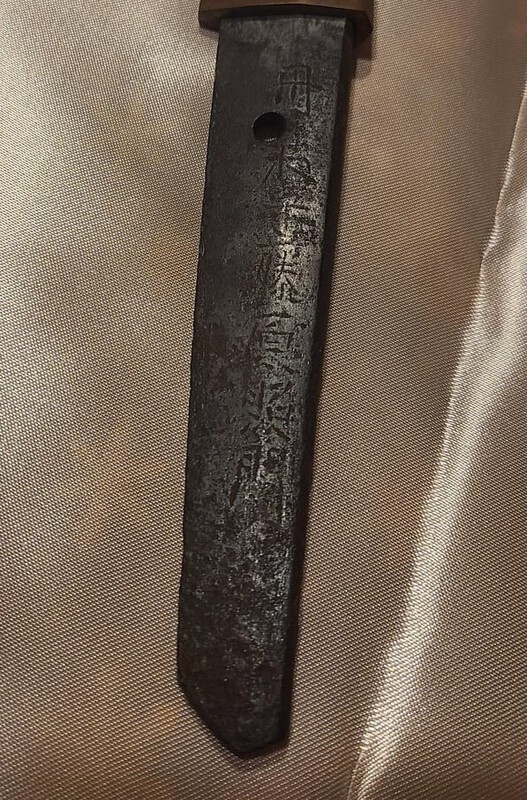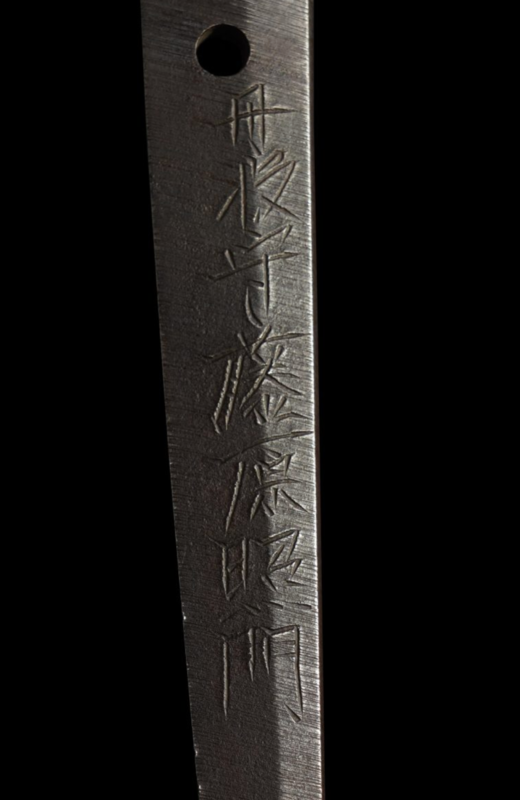
Mikaveli
Members-
Posts
156 -
Joined
-
Last visited
Contact Methods
-
Website URL
?
Profile Information
-
Gender
Male
-
Location:
Cambridgeshire, UK
-
Interests
日本物、日本刀、日本語、日本事!
Profile Fields
-
Name
Michael
Recent Profile Visitors
The recent visitors block is disabled and is not being shown to other users.
Mikaveli's Achievements
-
Does anyone know (or are there any good references) how the usage of the Naginata changed over time? For example pre, during and post the Sengoku period - and likewise after the Meiji restoration. When did the school gender separation begin etc?
-
Are you proposing some kind of caste system... 🤔😅 "Firearms expert" well, that's a broad topic. You're not going to find someone who knows everything about matchlocks, shotguns, military / service weapons and modern handguns all to the Nth degree. It's very possible (and common) for a collector to know more about a specific area (say variants of Enfield service rifles) than a professional with a different (or broader) focus. As a side note, I've been to the doctor and said "Doctor, I have this and I need this treatment" - albeit phrased a little more humbly, including an apology for the self-diagnosis. He told me I was absolutely correct, and that was exactly what was needed. Conversely, I've had friends overuled by teams of experts, only to have their lay opinion proved correct much later. Including more than one occasion with tragic consequences. Again, there is no human involved process that's infallible. Qualifications and positions of authority do not hold any monopoly on correctness. One reason why doctors sometimes misdiagnose is many combinations of symptoms fit many illnesses. And sometimes the way they present is atypical. Most of the arguments I've heard about attributions for swords eventually spiral into a circular argument - matching existing known works to be attributed as such. Disallowing exceptions - or the possibility that the existing reference information may itself contain inaccuracies.
-
Ouch, more than half of the signed failed as gimei! 🙈 I've got a blade going in to the June shinsa (which will be a first for me 😅). I'm happy with the condition etc. but I'm only 60% confident on the mei... It's not one of the obvious gimei, but neither is it a perfect match for the examples I've seen. Fingers crossed, but I have to be prepared for it to come back as a fake.
-
Similar to Alex, I've got respect for the NBTHK shinsa team - but questioning doesn't equate to criticism, as Jacques seems to assert. Any process involving people is fallible - and appealing to authority isn't enough for me. Just look at the number of misdiagnosis from medical doctors - and then the education and qualifications required to perform in those roles. I don't know what credentials / qualifications are required to appraise a sword and signature as genuine - but I'd imagine it crosses into quite a few fields; sword and political history, forging / smithing, Japanese language knowledge (including old / archaic writing), signature analysis, materials analysis (corrosion, aging, composition etc.) and so on. I work with a few PhDs, and whilst they're clever guys, their field of expertise narrows as the depth of their knowledge increases. They certainly don't know everything and make mistakes like anyone else. It'd be the height of hubris to assume there's nothing they could learn from less qualified or experienced people. So, yeah, I'd view the NBTHK as a highly respected authority, and I'd want a fairly high body of evidence to challenge their opinion. That's still not criticism though - as their appraisal should hold up to scrutiny - and, as in any scientific process, be prepared to change if evidence is later presented that might suggest otherwise.
-
I like the idea of a drunken master signing his work 😂 I wonder whether there's any value in the NBTHK publishing "confidence ratings" on their attributions 🤔 maybe a minefield... But I'd assume they must encounter some definite gimei, and some where is more of a maybe / probably / almost certainly etc.
-
-
That's very much how I think too. Consider these two mei One has very obvious multiple-strike strokes in the Kanji, the other is much smoother (both are NBTHK Tokubetsu Hozon). For this smith, he's know for his tang file marks becoming finer with age - and his mei aren't as deeply cut, but it's still quite a style change.
-
A Question about Sword Attribution
Mikaveli replied to drac2k's topic in General Nihonto Related Discussion
I was interested in the "Kan", as I hadn't come across it before. When would the sayagaki have been done? When / where would that unit have been used rather than yen etc? -
Funnily enough, the Tadayoshi gimei was one of the main areas of my concern. There's a reference gimei (in the Nihonto koza?) that is a very close copy to the authentic mei. With the differences laid out side by side, I can see the delta - but being honest, I wouldn't have drawn the conclusion of gimei. So, I've seen a few obvious gimei, and I'm confident enough to identify them as such - but once things get "close enough" - the blade is plausible, the mei is very similar - I don't know enough to say with any certainty that it's genuine.
-
Indeed. 🙂 In my case, I'm trying to build a collection of particular smiths of the same school / lineage. Previously I've only bought papered blades, but I've just recently taken a punt on an un-papered blade. Sugata, workmanship and condition all look very good - but I'm only 60% confident on the mei. It's going to shinsa in June, so fingers crossed 🤞 At the very least, I'll have a very nice blade - but if it's gimei it doesn't really have a home in my collection.
-
So, do we have any idea how many gimei blades are out there? For example, do we know how many swords fail NBTHK Hozen (for that reason)? Do we know which smiths are most frequently targeted (Masamune 🙈 Kotetsu 🤔)? Also, is it common for naginata and yari to have gimei? Finally - do we have a rough idea (anecdotally is fine) how many are "good" fakes - showing research around the smith's style and mei, trying to fool experts - versus "bad" fakes - where the blade and signature are very obviously wrong, and would only fool the most ignorant?
-
Mine's only a fairly novice opinion, but the horimono appears very quickly done (mass produced), the edge / "hamon" looks artificial, the tang narrowing like a kitchen knife is unexpected - as is the belt holster. Other than pitting/ rust, I can't see any surface pattern or workmanship that would lead me to think it was traditionally made. What's the history of the item? Why / where was it described as a "seppuku knife"?
-
I don't think that's a Japanese blade / holster. Looks Chinese/ made for tourists to me?






